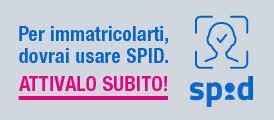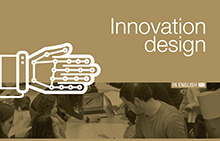Why Innovation Design?
Innovation Design at a glance
The master in Innovation Design aims at integrating multidisciplinary competences in the innovation of products and services field. The professional profile is very attractive for the industrial world and quite new in the academic offer. The faculty comes from the University of Ferrara and the University of Modena and Reggio Emilia. The different cultural backgrounds, along with the Technopoles of the High Technology regional Network opens a lot of possible collaboration with several leading industries (automotive, biomedical, infotainment, packaging and food etc.). The Master in Innovation Design was endorsed and supported by several International Design research groups and Institutions such as Stanford Center for Design Research”, “Paris-Est d.School” from Paris Tech e the CERN with the Idea Square project, which was created in collaboration with the UNIMORE Design thinking group.
The small amount of student who can apply (max. 40) is needed to ensure a top didactic experience and to implement many labs where the student are free to unleash the creativity and to realize tangible projects. The master in Innovation Design opens the door of the industries and gives as well the opportunity to continue with a PhD both in Engineering or Design.
Two main asset can be highlighted in the Master in Design: the first one is the Design Thinking approach, which was brought in Italy by UNIMORE. The Challenge Based innovation Project an course (http://www.cbi-course.com/) and the SUGAR network (http://sugar-network.org/) project testify the very high level of collaborative students activity in this area. The second asset is the learning by doing approach, where the coaches train the class in the management of multidisciplinary complex problem, by means of small groups activities.
The master in Innovation design shows these important features:
- International audience, English based lectures and labs
- Students with different backgrounds, multidisciplinary team based projects
- Industrial Partnership for the final synthesis project
- Innovative didactic: learning by doing, Design thinking, and group based projects
- Professional figures: the lectures will be strongly integrated with stakeholders, thought leaders and industrial actors to guide the student with mentoring sessions.
- More than Design: the integration of the Design methodology with engineering disciplines gives the student the chance of becoming industrial innovators of products and processes.
- Project based communication: the student will learn how to transfer the vital information about their project to other people and how to interact inside and between groups.
- Technology transfer: the multidisciplinary course enables a fast and efficient migration of solutions and ideas between different contexts, fostering creativity.
- Engineering aspects: Even though the design and creative part is fundamental, the background in Engineering is crucial to include in the projects feasibility constraints and quantitative method to ensure an industrial applicability of the ideas developed by the students
- Final territorial projects: the Master is structured in order to spend the last semester in a specific territorial lab: Educational technology innovation (RE) - Mobility innovation (MO) - Health and wellness innovation (FE) where the student will apply the design thinking methodology on real case studies.



